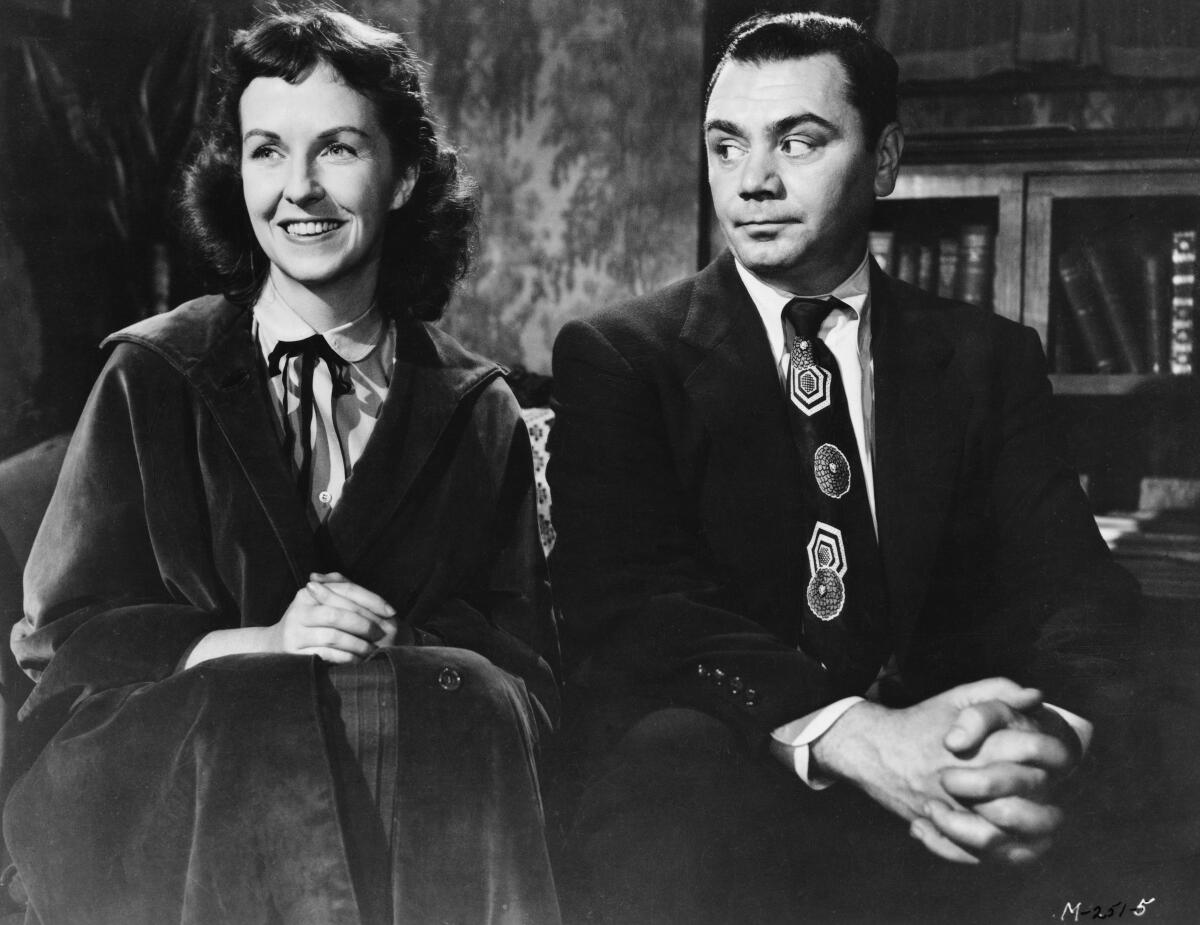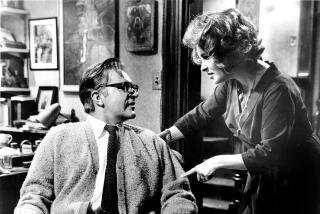From the Archives: ‘Marty’ proves simple values still hold greatest impact

- Share via
The simple story of a guy and a girl — neither regarded as very impressive per worldly estimates — is told with a sort of overwhelming humanness in “Marty,” which already has enjoyed a reputation quite out of the world as a screen event.
Yesterday this picture opened its special first engagement here at the Fine Arts Theater, and immediately found a responsive audience.
The opening was a record-smashing one, with crowds packing the theater until midnight.
Undoubtedly the public that will attend the initial showings will find themselves amazingly captivated by a production that has no cliches or gimmicks, but which instead sets forth feelingly an impression of the life led by Americans of Italian descent and other homely and quite understandable people that make up the solid foundations of life in this country.
Came From TV
“Marty” was a TV show before it became a feature picture. Its video author, Paddy Chayefsky, who is credited with so much of its appeal, also wrote the screenplay, Delbert Mann came from the telecast medium to direct the subject for the screen, which was produced by Harold Hecht, and presented by Hecht-Lancaster for release through United Artists.
The arresting thing is the casting of Ernest Borgnine and Betsy Blair in the starring parts.
Borgnine, always remembered as the cruel guardian of the stockade in “From Here to Eternity” up to the present time, will henceforward be contrastingly recalled as the good, honest, 100% human fellow, trying to discover a romantic life for himself, with plenty of handicaps, in a picture that may well be remembered as long as pictures themselves are remembered.
And what will cause it to be remembered is its intrinsic and inspiring spell of the goodness that is to be found in unostentatious and sincere people.
If Borgnine and Montgomery Clift cut each other to ribbons when Borgnine first attracted screen attention, there will be little recollection of that dire and dreadful wartime episode when the public becomes acquainted with the new Borgnine in “Marty.” Miss Blair, who has several times demonstrated marked efficiency as an actress here on the stage, shines right along with him as the gentle and understanding wallflower whom he meets in the dance hall, and with whom he finds deep and mutual grounds for understanding, because he seems to be such a bull in a china shop himself.
Other characters
Marty and Clara are the characters they portray. There are various other people to supply a counter-interest, balancing up the neatly made picture.
The mother of Marty has a sister, Catherine, who has attempted to make her home with her son and his wife, and this isn’t working out.
The wife resents the mother-in-law, and it is thought to be better to have the elderly lady move in with Marty and his mother.
Complications in the life of Marty do not end there, because his mother does not warm to his girl Clara upon a first meeting.
So the unfoldment proceeds along lines that will be understood by most people. The ultimate solution of Marty’s perplexities is one that may be abrupt but that will bring satisfaction for most beholders.
Ideally homespun
The picture is the ideal homespun type of creation for this era. And it apparently has captured publics other than ours, what with its winning of the Cannes Film Festival top rating.
Besides Borgnine and Miss Blair, the portrayals of the young married couple by Jerry Paris and Karen Steele; of Marty’s mother by Esther Minciotti, her sister by Augusta Ciolli, Marty’s friend Angie, so splendidly done by Joe Mantell and others offered by Frank Sutton, Walter Kelley and Robin Morse are entitled to highest recognition.
Photography is by Joseph La Shelle and music by Roy Webb and George Bassman, with a song, ‘’Hey, Marty,” provided by Harry Warren.
“Marty” is a must-see picture.
More to Read
Only good movies
Get the Indie Focus newsletter, Mark Olsen's weekly guide to the world of cinema.
You may occasionally receive promotional content from the Los Angeles Times.








